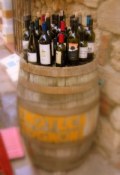 My four latest science news stories now live on SpectroscopyNOW, kicking off with an item about adulteration and red wine – Various approaches to statistical analysis of spectroscopic data can reveal whether red wine has been adulterated with anthocyanins to artificially improve, “correct”, its red colour.
My four latest science news stories now live on SpectroscopyNOW, kicking off with an item about adulteration and red wine – Various approaches to statistical analysis of spectroscopic data can reveal whether red wine has been adulterated with anthocyanins to artificially improve, “correct”, its red colour.
We also have an item on how to use an inexpensive digital camera to test water samples rather than having to fork out for an atomic absorption spectrophotometer. Researchers in Spain are hoping that a standard digital camera is the perfect alternative to expensive and sophisticated laboratory instrumentation for some analytical applications. They have demonstrated how it can be used to determined potassium and magnesium concentrations and water hardness and validated the results against conventional AAS measurements.
In the world of parasites, spectroscopy can be very useful for revealing their weaknesses. NMR spectroscopy has provided researchers with insights into how parasitic organisms exploit nutrients provided by the host organism. The work could open up a new approach to finding unique drug targets and in the present study, specifically against the tropical parasite Leishmania.
Finally, a whole raft of analytical techniques have been used to work out how metal nanoaparticles form within aluminium alloys. The study could lead to approaches for making tuneable materials for engineering, construction and aeronautics based on nanotechnology.